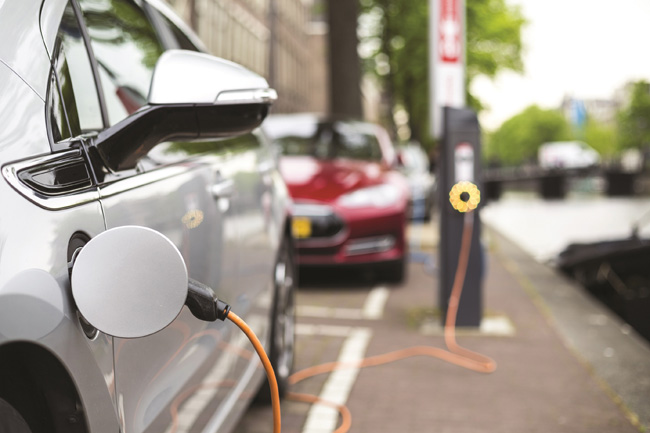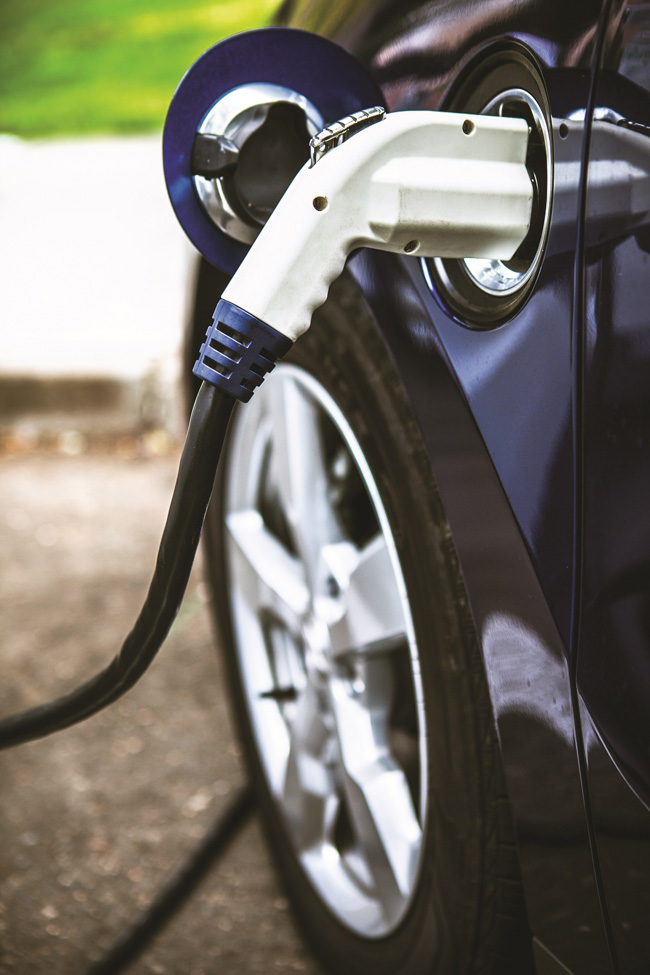
The meteoric uptake of electric vehicles (EVs) shows no sign of slowing. More than 1.6 million EVs are currently sold worldwide, and numbers are predicted to reach 41 million by 2040, when EVs will represent 35% of all new light-duty vehicle sales.
The transition to low-emission vehicles is being driven largely by a number of environmental strategies. Under the Paris Agreement, global leaders are pushing to phase out fossil fuel-powered vehicles, which are major contributors to air pollution and climate change. The UK, Germany and India are among the countries implementing varying types of action to phase out internal combustion engine (ICE) vehicles on our roads and increase the number of EVs. China’s war on vehicle pollution has led it to a dominant position in the EV market, accounting for around 50% of EVs currently on roads worldwide. As air pollution poses an increasing threat to public health in the Asia-Pacific region, the Chinese government is pushing for the electrification of vehicles and has set ambitious targets for 20% of car sales being EVs by 2025.
Europe is also a buoyant EV market, but with a different approach to the issue: mild and plug-in hybrids (PHEVs) currently make up a large proportion of European EV sales.
Norway is leading the global charge towards low-emission transportation to meet climate change and clean air goals: 45% of new passenger vehicle sales were all-electric vehicles in September 2018 (60% when including PHEVs), according to official registration data. Average CO2 emissions of new cars registered are now at a record low of 55g per km, which is an impressive reduction of 16g per km over a 12-month period. Its Scandinavian neighbour, Denmark, has not only followed the international example but has gone a step further. The Danish government has banned sales of petrol and diesel cars by 2030 – sooner than many other countries – and has also announced plans to ban sales of hybrid cars by 2035. Soon, zero-emission vehicles will be the only option.
Electric vehicle uptake
A number of additional factors point towards more rapid international EV uptake, increasing pressure on those responsible for readying our infrastructure. The ability of automotive manufacturers - spurred on by demanding emissions legislation - to develop affordable EVs with sufficient range capabilities, is a significant factor. Solid-state batteries are emerging as a game-changing future battery technology and the commercial viability of EVs is increasing thanks to the reducing price of battery technology overall: EV batteries and ICE costs are set to reach commercial parity as early as 2020.
Nissan estimates that EV prices will draw level with conventional cars by 2025, and it’s predicted that the total cost of EV ownership – including charging and maintenance – could fall below conventional car ownership in Europe. In addition, adoption of low-emission vehicles by logistics companies and local authorities, particularly for urban use, is driving significant global uptake of electric light commercial vehicles.
We could be facing widespread uptake of EVs far sooner than most governments’ timeframes. So, how will this accelerated shift to EVs impact on global infrastructure?
Curbing pollution from ICEs
One thing is clear: while there is promising international momentum to curb the pollution from ICE vehicles and tackle global environmental problems, local market forces are leading to a lack of cohesion when it comes to the practicalities of EV adoption on the ground. This is becoming rapidly evident in our evolving vehicle power requirements.
The mainstream shift from fuel tanks to batteries will be a huge international challenge. For decades, our transportation has largely been powered by burning an enormous volume of petrol and diesel. This will be taken as electricity from the grid, and there is rising demand for more charging stations globally.
As numbers of EVs on our roads continue to rise, some governments are investing in national charging networks - the UK has contributed £400m to EV infrastructure while China has recently announced a funding of $16 billion for the installation of new EV charging stations. A number of private players have also entered the EV charging market. They face stiff competition from energy and petrochemical companies and automotive manufacturers who have started investing heavily in establishing EV charging stations. It’s only in the past year, however, that cross-border charging networks have begun to emerge, including pan-European networks from E.on, a group of the world’s largest car manufacturers, and a joint venture between established EV charging businesses.
Despite this huge growth, however, there is no cohesive international strategy for EV charging, resulting in a myriad of different facilities, and many locations remaining poorly served. Understanding the diversity needed to create a sustainable charging infrastructure, as well as what will be most suitable both now and into the future, is crucial.
International network of EV charge points
Establishing an international network of EV charge points to meet growing driver demand is not that simple. The energy needed to power our growing EV fleet will be taken as electricity from the grid – an immense change in capacity and load-profile demands that could have huge impact on consumers and businesses unless action is taken to strengthen our infrastructure.
As more car owners seek to plug in EVs to charge at home, National Grid has warned that Britons may have to choose between boiling a kettle or charging their car. It is even predicted that EV charging will create a new peak hour that could see UK demand rise by as much as 8GW by 2030. And this seismic shift in energy demand is set to impact around the globe. Higher EV uptake in certain areas combined with a lack of infrastructure investment has the potential to create significant local challenges, including a greater likelihood of ‘brownouts’.

We’ve yet to see a robust and widespread solution that will meet the world’s future needs. The challenge is to use new technologies, engineering and experience to deliver smart solutions that meet the evolving needs of drivers, homeowners and businesses by implementing a future-proof energy infrastructure. If world leaders do not take a more holistic approach soon – one which effectively combines energy, transport and communications infrastructure with construction strategies - we’ll all be heading for a major energy and economic dilemma.
Wireless charging systems
While we can see that this transport revolution brings many challenges, it’s also worth noting that there are several commercial opportunities, which have received scant attention in comparison to the general infrastructure debate.
In addition to a network of EV charging points, the UK’s Department for Transport has unveiled a £40 million plan to develop wireless charging systems to be embedded in car parks and along major highways to power up vehicles without the need for drivers to plug in. While these kind of Scalextric-style solutions may seem far off, Sweden has already installed the world’s first e-road and a similar system is being tested in China. Infrastructure developers must consider a rapidly growing array of new and emerging technologies to meet our increasing demand for power.
At a political level, regulatory changes could reduce the risk of power demands exceeding availability through smart EV charging, enabling power distribution companies to ensure charging is off-peak. Moreover, facilitating off-grid renewable power supply and storage solutions - such as waste to energy plants, photovoltaic (PV) or wind turbines - would meet EV power requirements (at least in part), secure energy supply on a specific site and go towards environmental targets. There is even the possibility of EV batteries being combined in Vehicle-2-Grid (V2G) solutions to provide grid-balancing services - the UK government has committed £30m to developing V2G technologies. And, with $90 billion global investment in EV R&D, many countries have the opportunity to progress a new area of commercial growth and academic prowess.
There is a clear window of opportunity for progressive developers and policy makers to overcome the challenges of EV adoption and carve out an innovative and sustainable transport system. Priority must be given to strengthening our energy infrastructure, which in some areas is already struggling to adjust to the integration of renewable generation schemes. World leaders must take a more holistic approach - combining transport, energy and communications infrastructure strategies on an international scale. If we are to realise our bold clean air ambitions, policy makers must step away from piecemeal, local pledges and collaborate effectively with the utilities sector and wider industry to overcome the challenges of the brave new world we’re creating.











